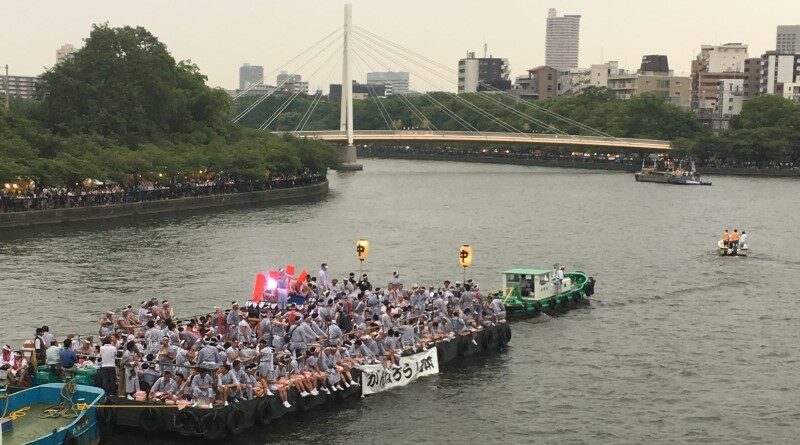
Tenjin Matsuri: Osaka’s BIggest Festival
The summer festival season in Osaka lasts the entire month of July. All month long, there are summer festivals every week somewhere in Osaka. Among those festivals, the most famous is without a doubt Tenjin Matsuri at Osaka Tenmangu Shrine. So many people come to Tenjin Matsuri, not only from Osaka Prefecture but from so many places throughout Japan making Tenjin Matsuri one of the three biggest festivals in the country.
What is Tenjin Matsuri?
Tenjin Matsuri is a very old festival and has been held in Osaka for over 1,000 years. The main purpose of this festival is to show the prosperity of Osaka to the main deity of Osaka Tenmangu Shrine, Sugawara no Michizane.
The first records of Tenjin Matsuri appear in 951 A.D. when Osaka Tenmangu Shrine performed a ritual wherein a spear was floated down the Dojima River from the shore near the shrine (called Hokonagashi). Wherever the spear washed ashore, the priests would make a purification site called an otabidokoro. The priests would then transport the soul of Sugawara no Michizane to the purification site.
The shrine would hold a large parade to the shore known as Rikutogyo, and then sail down the river with a small fleet of festive boats in what is called a funatogyo to the purification site. Naturally, since the purification site occurred wherever the spear landed, the exact spot changed from year to year.
In Edo period, Osaka Tenmangu decided to build an angu [行宮], or temporary shrine, near what is present-day Osaka Dome.
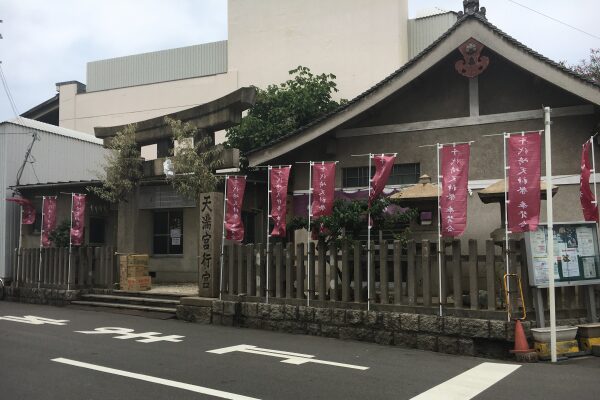
As the centuries passed, Osaka’s riverbanks slowly began to change, largely because of the demands placed on Osaka’s water table due to the thousands of new residents.
By 1949 the river had changed so much that it had become impossible for the priests to parade to the angu. Not given anything other choice, the priests decided they would no longer go down river, but up instead.
Tenjin Matsuri Yomiya
July 24th is Yomiya. Throughout the day, there is always something going on at Tenmangu. Even without Tenjin Matsuri’s famous fireworks show, the crowds are still quite large once the evening ceremonies start.
Hokonagashi, the spear floating ceremony, is one of the main events on the 24th. Hokonagashi used to be a crucial event during Tenjin Matsuri because the place where the spear went ashore was the place where they conducted a ceremony. The ceremony starts a little early in the morning, but if you have the chance, you should try to go see it.
In this ceremony, one little boy who lives in Tenma is picked as the “shin-do” or “godchild” to drift the spear on the Dojima River. The procession heads towards the Dojima River where the rest of the ceremony will take place.
After many purification rituals and prayers, the shin-do and a few priests get in a small boat to toss the spear into the river.
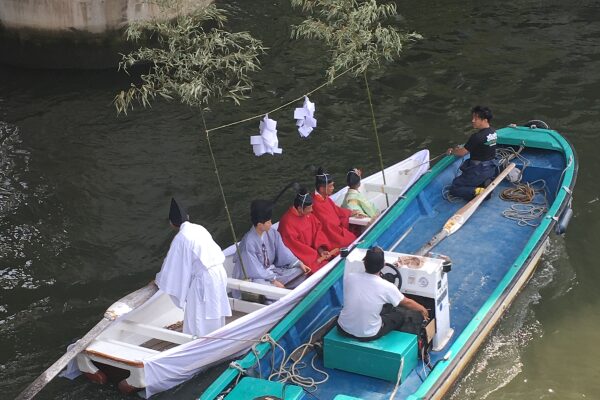
After the Hokonagashi ceremony, there will be a number of other events at Tenmangu Shrine later in the day, but many of them do not start until the late afternoon/early evening. You will have to wait a while before the other festivities start at Tenmangu Shrine.
Of course, there will be plenty of vendors with food, drink, and games to keep you preoccupied for a while, but besides taking time to get plenty of things to eat, be sure to take a walk around Tenmangu Shrine. There you will be able to get a closer look at the mikoshi and some rare exhibits.
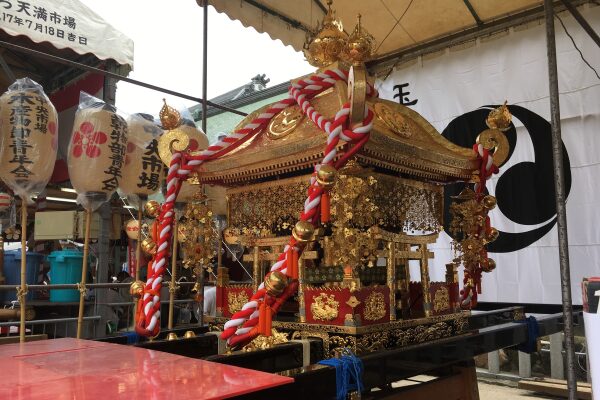
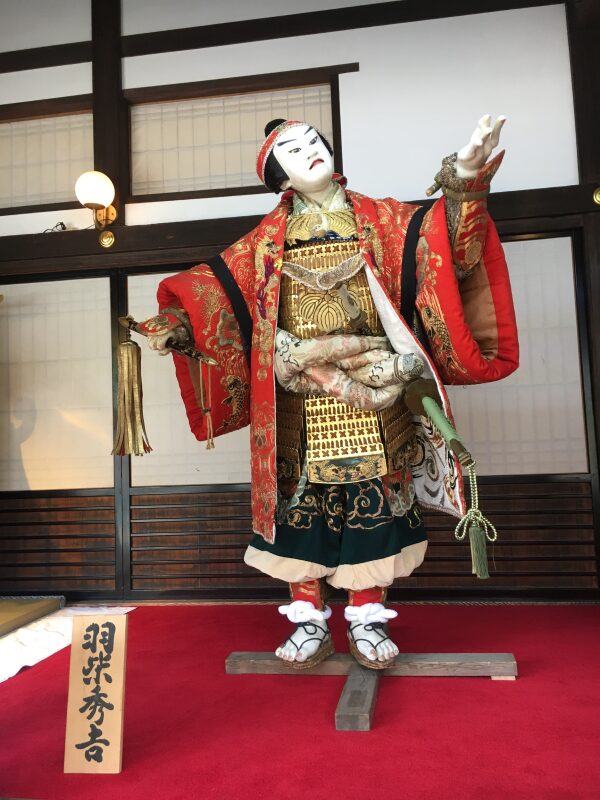
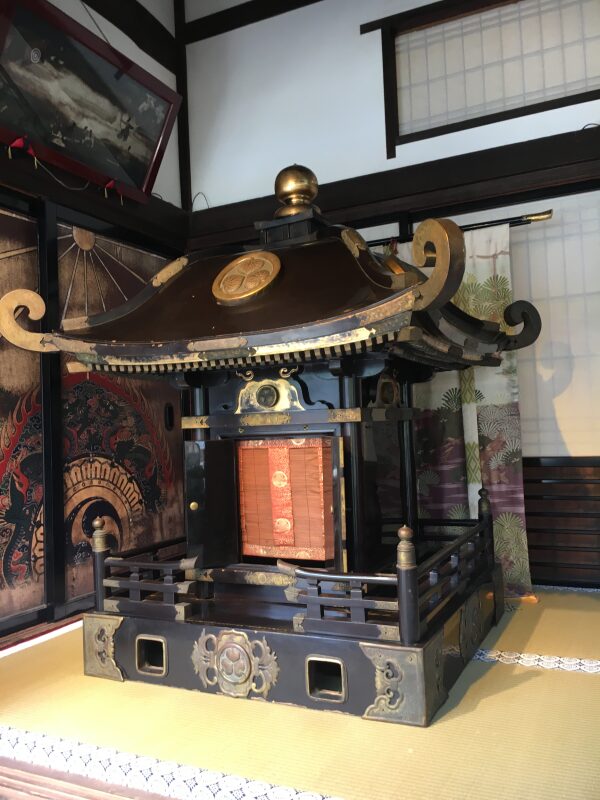
Miyairi is the ceremony where taiko and shishimai celebrate in the shrine the night before Tenjin Matsuri, as well as receive blessings from the shrine.
One of the most iconic and most anticipated parts of Tenjin Matsuri is the Moyooshi Taiko. This massive drum and its performers, called Ganji [願人], with their flashy red hats, have been a part of the festival for a long time.
Groups of six will ride around pounding the drum while the rest cheer and help maneuver the large instrument. They also perform some pretty amazing feats of balance and strength. They lift the drum into the air, but also rotate it from side to side!
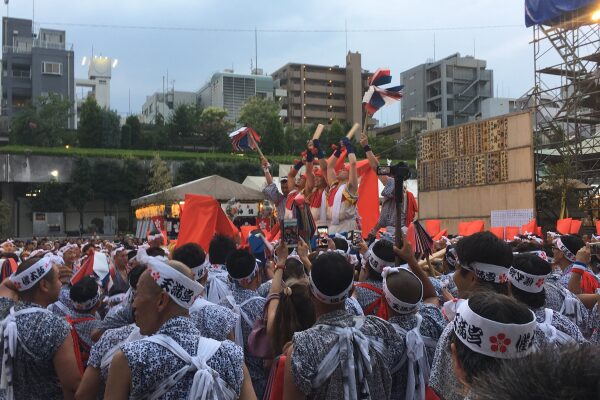
After the taiko finishes, the last half of the night’s festivities start: the shishimai and Kasa Odori, or umbrella dance. The colorful umbrella and cheerful shishimai dancing around the shrine are a real delight.
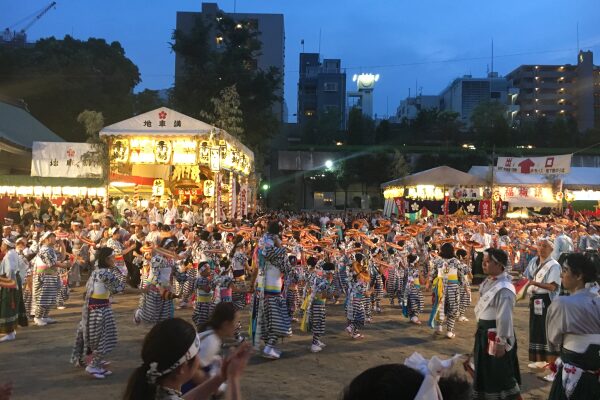
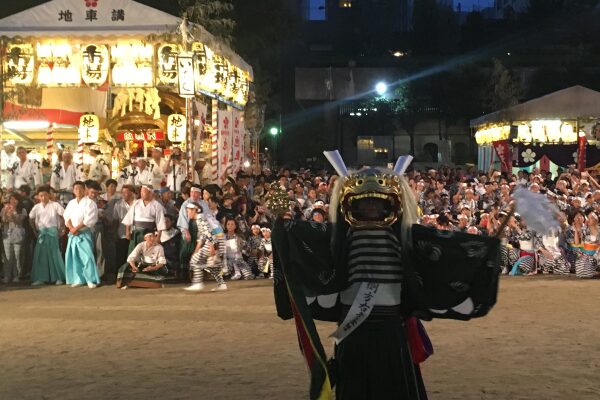
Tenjin Matsuri Honmiya
The highlight of Tenjin Matsuri is one long two-part parade that goes on all day. First, the parade starts through the streets of Tenma around Osaka Tenmangu Shrine, and then goes up the Okawa River. This parade is held on July 25th and everything wraps up with a big fireworks show in the evening.
Rikutogyo
The Rikutogyo is the formal name for the street part of the Tenjin Matsuri parade. This parade starts from Osaka Tenmangu, roughly around 3:30 in the afternoon. Many people will crowd around the entrance of Osaka Tenmangu to see the taiko, danjiri, and performers coming out of the shrine.
The route for the Rikutogyo is very long, going all the way around Mido-Suji Street and the Osaka City Office before heading back towards Tenjinbashi Bridge. This route will give you many different places where you can see the parade.
The Okatogyo starts with Moyooshi Taiko, followed by Sarutahiko, Danjiri, and many other things. Two Mikoshi will come in the end.
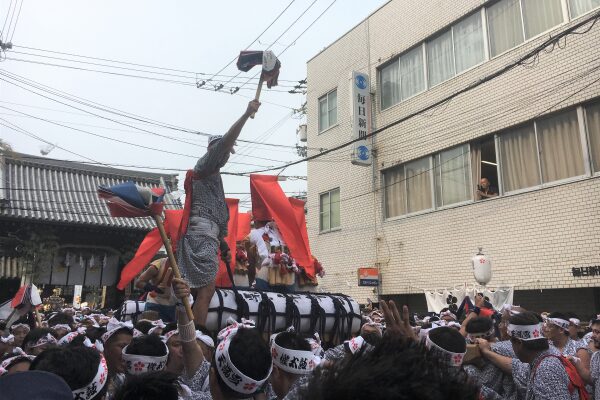

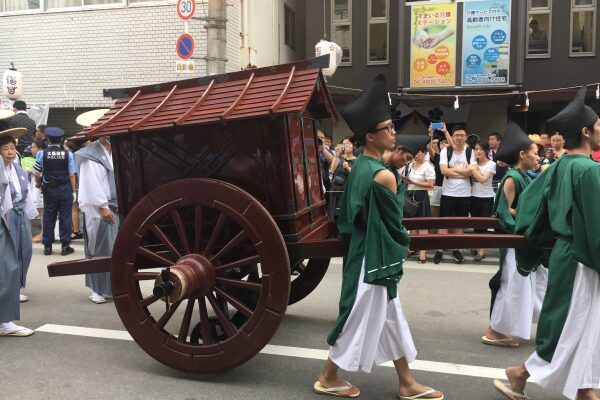
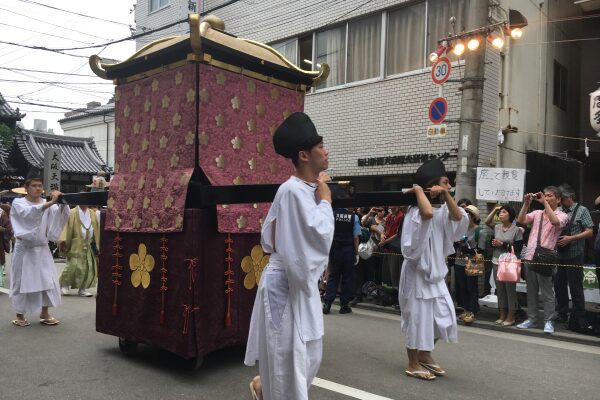
The most important thing in this parade is Gohouren which is supposed to carry the soul of Tenjin-san from Osaka Tenmangu around the city. This has historically been the main event of Tenjin Matsuri because it allows Tenjin to see how Osaka has prospered over the past year.
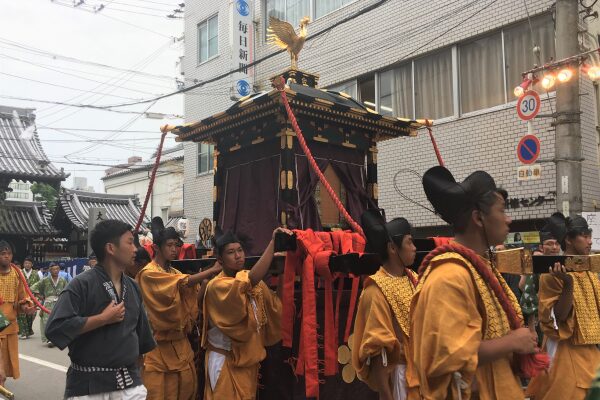
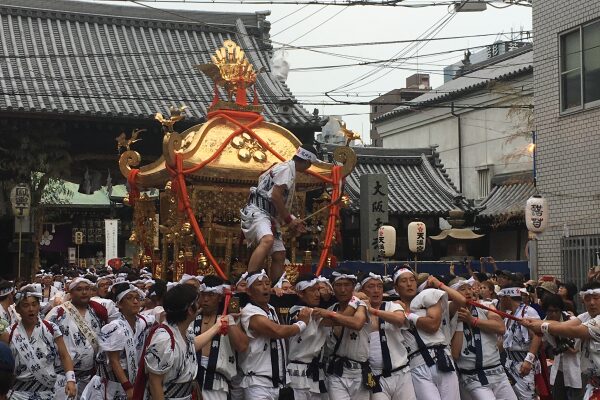
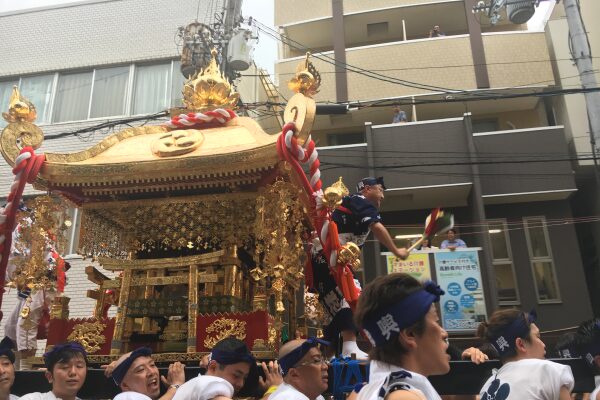
Funatogyo
The Funatogyo is the river portion of the parade for Tenjin Matsuri. During this part of the parade, about a hundred boats will sail up and down the Okawa River, starting from near Tenjinbashi Bridge and going up to Hishobashi Bridge before returning to Tenjinbashi Bridge. The whole thing will take about 2 hours.
The boats of the Funtagyo consist of three groups: Gubu-sen, Hohai-sen, and Hoan-sen, and there are as many as 100 ships going through the river.
Gubusen-sen boats contain people who were part of the Rikutogyo, such as the taiko, kasa odori, danjiri and so on.
Local companies sponsor Hohai-sen boats and you can pay to get a seat on one of these boats and ride up and down the river as part of the festival. Prices typically run about 30,000 yen (about $300 USD) and they absolutely sell out every year.
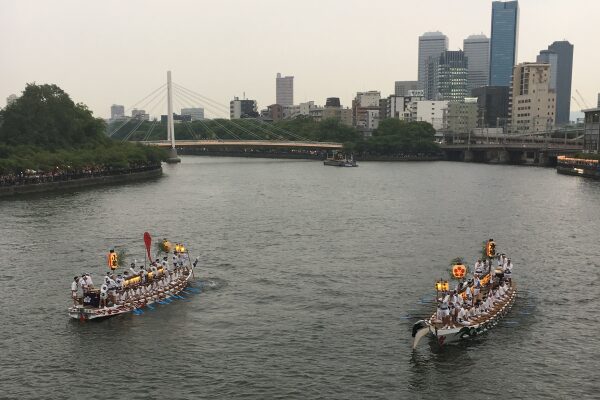
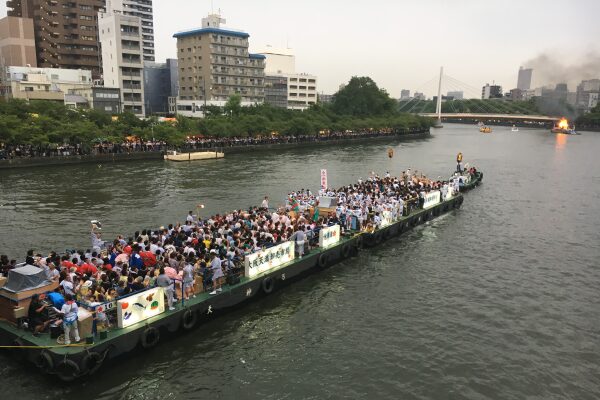
Eventually, Houan-sen, the ship that carries the spirit of Sugawara no Michizane, will sail up the Okawa River. When all those ships light up the river and nighttime falls, the fire festival begins.
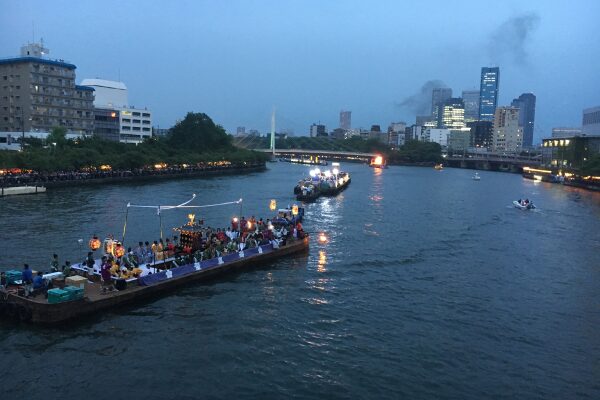
Fireworks Show
The fireworks show will start at 7:30 once the sun has completely gone down and it is nice and dark. The show will last until about 9:00 and will display a total of 5,000 fireworks! By the time the show starts, the park will be full. Getting a clear view of the fireworks is trickier than you might assume. Sakuranomiya Park has a lot of trees and is surrounded by tall buildings.
The best places to be to view the fireworks are Osaka Amenity Park (OAP) or next to Sakuranomiyabashi Bridge. However, if you want a spot at either of those places you need to be there as early as 1:00 in the afternoon
Venues and restaurants with a nice view of the river take advantage of Tenjin Matsuri and charge a special surcharge for seating. There is also reserved seating along the river you can pay for, but like getting a seat on the Hohaisen, it is expensive and competitive.
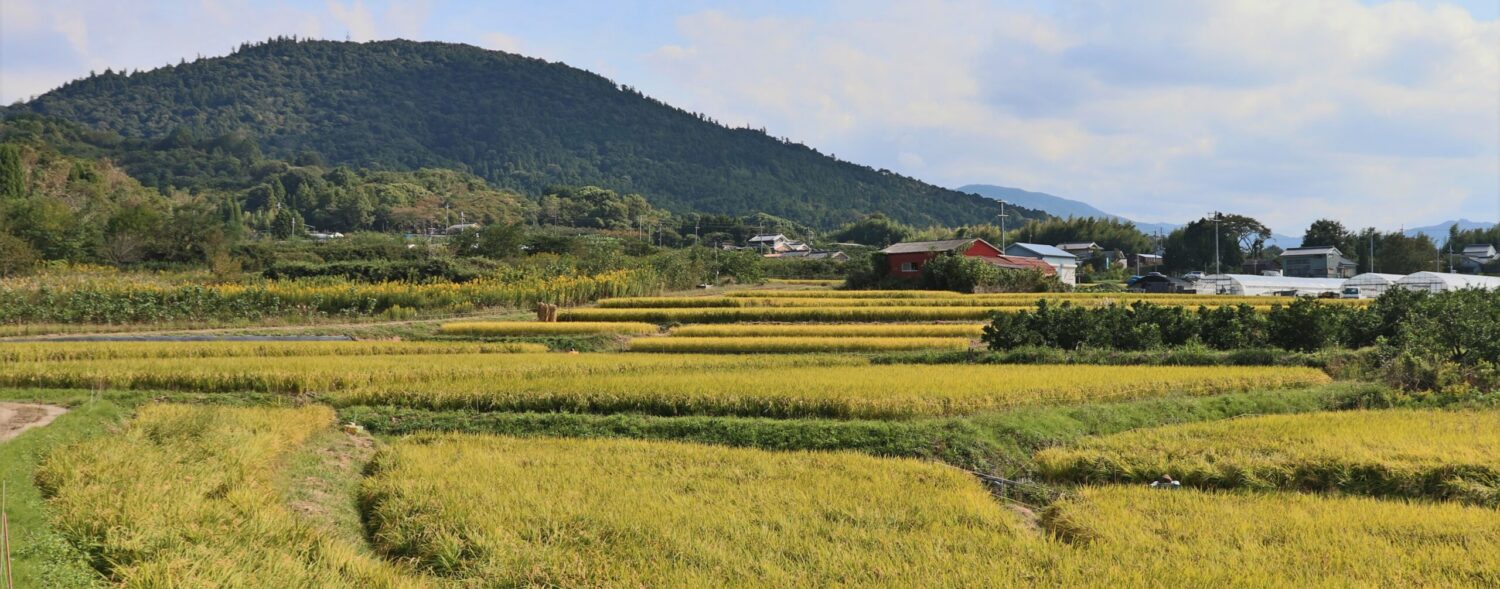
Leave a Reply